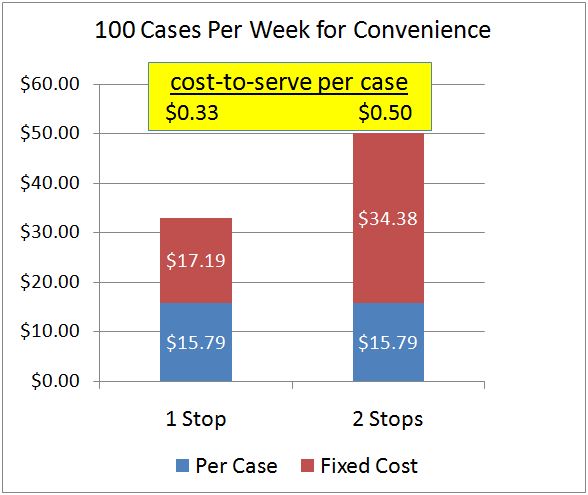COST-TO-SERVE IMPROVEMENT

Not All Stop Types Cost The Same...

Visit Frequency Impact on Cost Per Case
In a DSD environment the most important cost decision you can make is how frequently do I visit a customer? Heavy emphasis is placed on visit frequency, but often it’s treated like art and not science.
Most cost-to-serve models tend to include all costs (including overheads that really should be excluded) to come up with an overall cost per case. The problem with this approach is that all customers tend to look the same except for case volume.
In reality, each stop type (e.g. grocery, convenience store), and stop, has their own fixed per stop and variable per case service time requirements regardless of how many cases you are delivering. These time requiredments determine the costs for each individual stop.
With activity based cost-to-serve for each customer and chain, your team can make better frequency decisions
Activity based cost-to-serve not only identifies opportunities to save in Sales & Delivery route planning and reduction, but also in pick costs!We’ve got activity based cost-to-serve figured out. We can show you how to use it to both determine visit frequency and to also provide executive tracking metrics that ensure accountability for your sales and delivery team on cost and compliance.
It’s important to note that frequency is not the prime driver of ‘in-stock’ at the cooler. It’s really an inventory planning problem. The cooler space allocation vs. case demand variation by product is the key factor. You must have enough cooler space allocated to cover the demonstrated demand for that product until your next visit.



